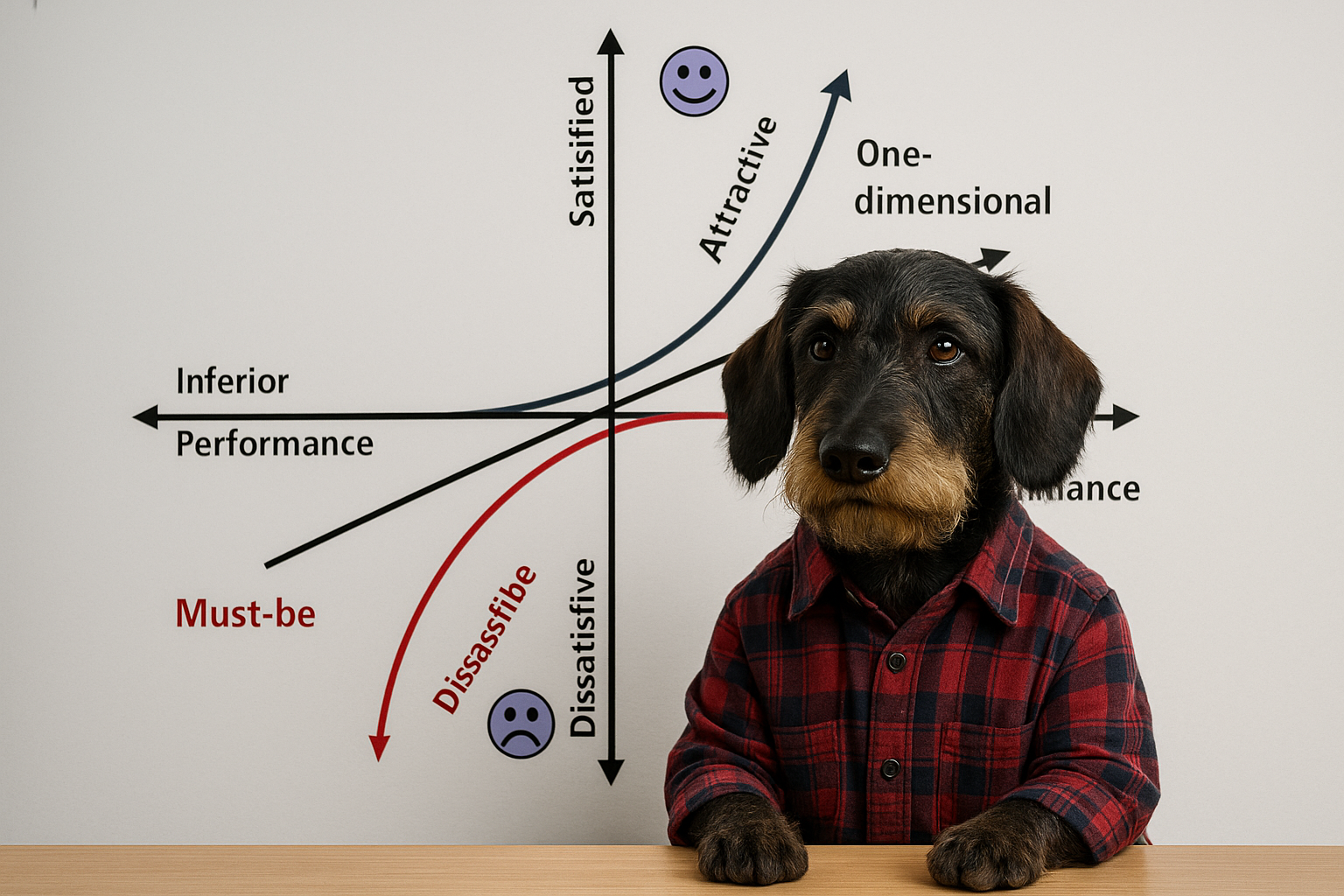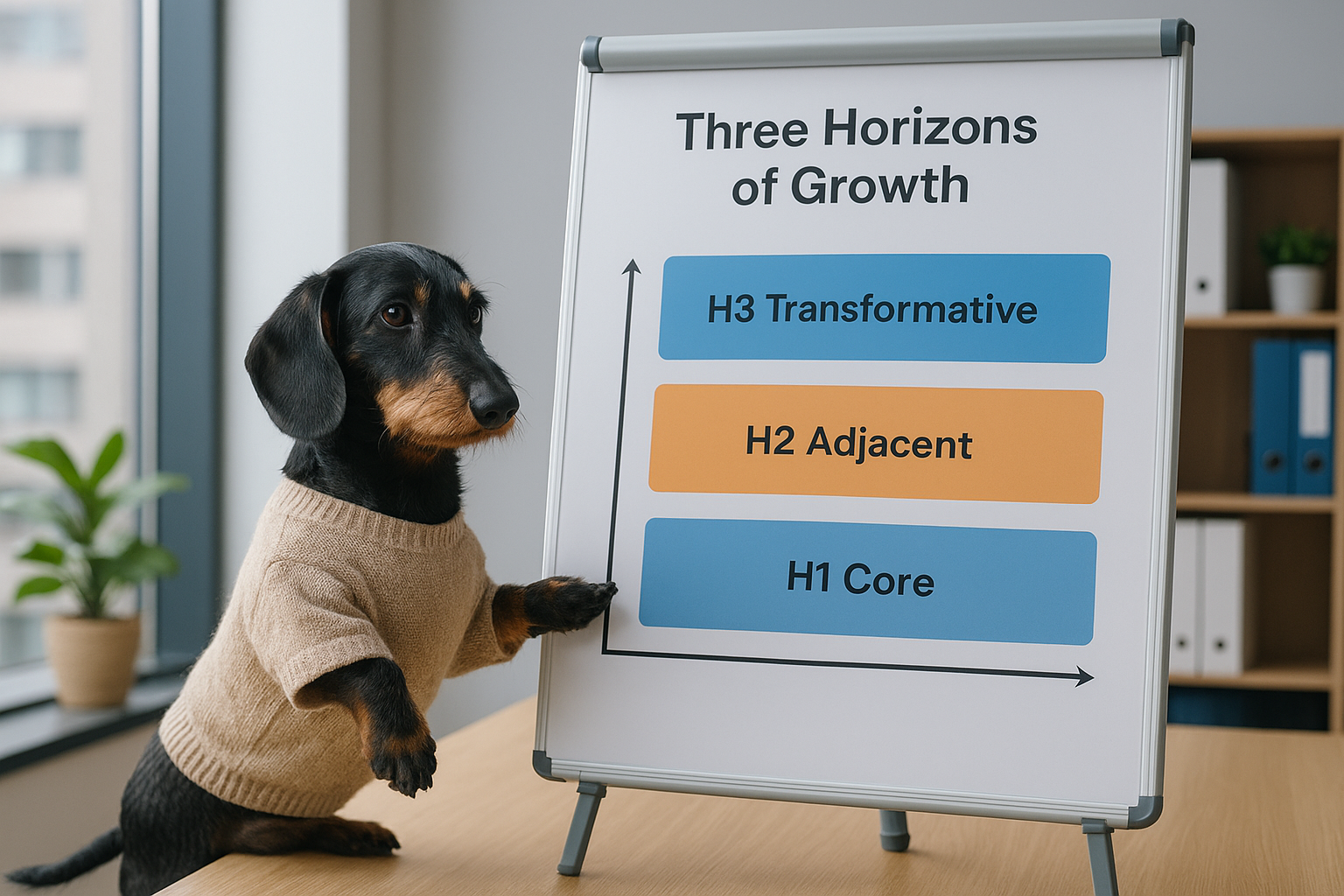
Objective Prioritisation: Payback Period
The Financial Metric Product People Actually Understand
Payback Period prioritisation ranks features by time to recover investment—the CFO's favourite metric because it answers 'when do I get my money back?' Simpler than NPV, more intuitive than IRR, but blind to what happens after break-even.

Objective Prioritisation: BRICE
RICE + Strategic Alignment = Roadmaps That Actually Serve Business Goals
BRICE extends RICE with Business Importance—forcing teams to explicitly score strategic alignment before reach and impact. Stop building high-impact features that don't matter to the business.

Objective Prioritisation: ICE
Fast Roadmap Decisions for Teams Who Can't Afford Analysis Paralysis
Sean Ellis's ICE framework—Impact × Confidence × Ease—is RICE's scrappy younger sibling. Built for speed over precision, ICE thrives when startups need decisions today, not perfect data tomorrow.

Objective Prioritisation: Manual
Executive Override and Political Triage—When Simple Beats Scientific
Manual prioritisation—a simple 1-10 scale—is what you use when frameworks feel like theatre and executive judgment beats algorithmic scoring. It's not surrender; it's pragmatism about how decisions actually get made.

Objective Prioritisation: MoSCoW
Scope Negotiation for Fixed-Deadline Projects That Can't Fail
MoSCoW—Must have, Should have, Could have, Won't have—is prioritisation stripped to its brutal essence. Perfect for fixed deadlines when stakeholders need to see exactly what gets cut if the timeline slips.

Objective Prioritisation: Opportunity Scoring
Find the Gaps Between What Matters and What Satisfies
Tony Ulwick's Opportunity Scoring—Importance minus Satisfaction reveals where customers are begging for better solutions. Stop building features nobody needs; start closing gaps that matter.

Objective Prioritisation: PIE
Potential, Importance, Ease—Prioritisation for Growth Teams Who Test Everything
Chris Goward's PIE framework—Potential × Importance × Ease—prioritises experiments and features by upside if successful. Built for growth teams optimising conversion, now used everywhere fast decisions matter.

Objective Prioritisation: RICE
Data-Driven Roadmaps for Teams Who Measure Everything
Intercom's RICE framework—Reach × Impact × Confidence ÷ Effort—turns gut instinct into quantitative roadmap decisions. Learn when RICE is your best weapon, and when it betrays you.

Objective Prioritisation: Value vs Complexity Matrix
Visual Clarity for Teams Who Think in Quadrants, Not Numbers
The Value vs Complexity Matrix—a visual 2×2 grid that turns abstract prioritisation debates into clear quadrants. Quick Wins, Major Projects, Fill-ins, or Money Pits—see your roadmap at a glance.

Objective Prioritisation: WSJF
Cost of Delay Economics for Large-Scale Agile—When It Works
WSJF—Weighted Shortest Job First from SAFe—prioritises by cost of delay divided by job size. Perfect for enterprises optimising economic urgency. Just beware SAFe's gravitational pull toward process over outcomes.

Objective Tagging: Gartner's Run / Grow / Transform Modal
A pragmatic guide to Gartner's Run-Grow-Transform portfolio lens and how product managers can use it to balance operational excellence with bold innovation.

Key Result Tagging: Committed vs Stretch Goals
The OKR Distinction That Separates Winners from Wishful Thinkers
Master the OKR fundamental that Google lives by—Committed goals demand 100% delivery, Stretch goals target 60-70% ambition—so boards and teams finally speak the same language about expectations.

Key Result Tagging: Confidence Level %
From Static Predictions to Dynamic Risk Signals
Track evolving confidence (0-100%) in achieving each key result—not as a static guess but as a living signal for when to double down, pivot, or pull the plug before it's too late.

Key Result Tagging: Level of Ambition
From Moonshots to Certainties—Calibrating Stakeholder Expectations
Signal where teams stretch versus deliver with certainty—Low, Medium, High ambition, or High Integrity Commitments—so stakeholders calibrate expectations and debates shift from blame to learning.

Key Result Tagging: Metric Type
When Numbers Tell Half the Story—Balancing Metrics with Meaning
Balance numbers with nuance—tag key results as Quantitative (metrics), Qualitative (insights), or Boolean (yes/no outcomes) to ensure you're not optimising spreadsheets while missing the stories that matter.

Key Result Tagging: Outcome vs Output vs Input
The Measurement Hierarchy That Separates Motion from Progress
Stop celebrating deliverables while impact stalls—tag key results as Outcomes (impact achieved), Outputs (deliverables produced), or Inputs (activities performed) to measure what actually moves the business.

Key Result Tagging: R&D Tax Credit
From Engineering Work to Tax Relief—Tagging What Qualifies
Turn qualifying R&D work into tax relief by tagging key results that prove technical uncertainty, systematic investigation, and genuine innovation—making claims audit-ready before HMRC comes knocking.

Key Result Tagging: Validation Method
Experiments vs Assumptions—The Difference Between Science and Wishful Thinking
Distinguish hypothesis-driven experiments from assumption-based guesses—tag how you're validating key results to expose which teams build on data and which gamble on intuition.

Objective Tagging: Core vs Context
Crossing the Chasm by stopping the Resource Drain on Work That Won't Win the Market
How Geoffrey Moore's Core-versus-Context distinction helps SaaS leaders protect differentiation, outsource the ordinary, and explain tough resourcing calls to the board.

Objective Tagging: Customer Journey Stage
From First Touch to Loyal Advocate—Mapping Roadmap Work to Lifecycle Stages
Map your roadmap to the customer lifecycle—Awareness, Consideration, Conversion, Retention—and ensure balanced investment across every stage from first touch to loyal advocate.

Objective Tagging: Jobs-to-be-Done
Why Customers Hire Your Product—and How to Tag Your Roadmap Accordingly
Stop building features and start hiring your product for jobs—Functional tasks, Emotional desires, and Social aspirations—that reveal why customers truly choose you.

Objective Tagging: Kano Maps
Using Kano Maps to Build Love, Not Just Loyalty
Leveraging the Kano model—Must-Have, Performance, and Delighter attributes—to balance foundational reliability with wow moments on the product roadmap.

Objective Tagging: McKinsey's Three Horizons of Growth
How RoadmapOne users can use McKinsey's Three-Horizons model to structure short-term wins, mid-term bets, and long-term moon-shots without starving any of them.

Objective Tagging: Pirate Metrics (AARRR)
Charting the Customer Voyage from First Click to Profit
A deep dive into Dave McClure's "Pirate Metrics", showing product teams how AARRR tagging reveals funnel leaks, drives focused experimentation, and turns growth conversations with the board from foggy to forensic.

Objective Tagging: SAFe Enablers vs Business Features
Giving Platform Work the Story it Deserves
Demystifying SAFe's Enabler-type backlog items and showing product teams how explicit tagging sharpens conversations with technical architects and boards alike.

Objective Tagging: SVPG Product Risks
Categorising Value, Usability, Feasibility, and Business Viability to de-risk the Roadmap
Using Marty Cagan's four product-risk categories—Value, Usability, Feasibility, Business Viability—to tag roadmap items, focus discovery, and make risk mitigation a first-class metric.

Objective Tagging: The Balanced Scorecard
Turning Strategy into Everyday Product Choices
Translating Kaplan & Norton's Balanced Scorecard into a roadmap-tagging lens that aligns product portfolios with strategy through Financial, Customer, Internal Process, and Learning & Growth perspectives.

Objective Tagging: The BCG Product Portfolio: Stars, Cows, Question Marks, Dogs
Letting the BCG Matrix Tell You When to Milk and When to Feed
Applying the classic BCG Growth-Share Matrix (Stars, Cash Cows, Question Marks, Dogs) to product portfolios and showing how roadmap tagging clarifies funding bets.

Objective Tagging: The Innovation Ambition Matrix
Escaping the Core Comfort Zone
Use RoadmapOne to align ExCo on your your Product Roadmap. Analyse according to a dozen resource allocation models, including the Innovation Ambition Matrix. Instantly categorise Objectives according to Core, Adjacent, and Transformational.

OKRs for Product Teams
Many product teams struggle to implement OKRs in a way that drives meaningful outcomes rather than becoming another bureaucratic checkbox exercise.